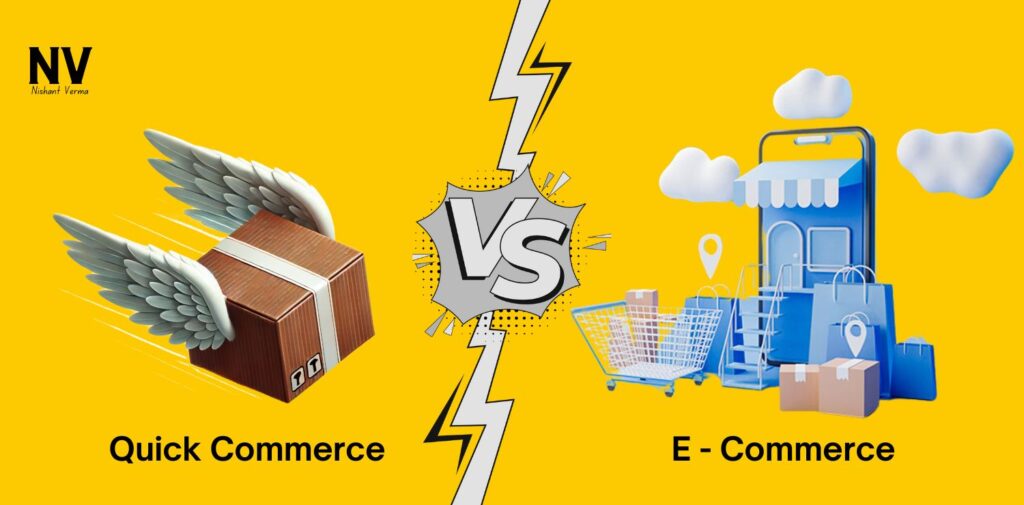In today’s fast-paced world, shopping online has become a daily habit for many people. But the way we shop online is constantly evolving. Two key types of online shopping are Quick Commerce and E-Commerce. Both offer convenience, but they work differently and cater to different customer needs. In this article, we will explore the differences between Quick Commerce vs E-Commerce, explain how each works, and discuss the pros and cons of both. By the end, you’ll have a clear understanding of how these two online shopping models fit into our lives.
What is E-Commerce?
E-commerce stands for electronic commerce. It simply refers to the buying and selling of products or services over the Internet. Platforms like Amazon, Flipkart, Myntra, and Snapdeal are examples of traditional E-Commerce platforms. People visit these websites or apps, browse through various products, select what they want, make a payment, and wait for the delivery. Depending on the platform and location, deliveries typically take anywhere from 2 to 7 days.
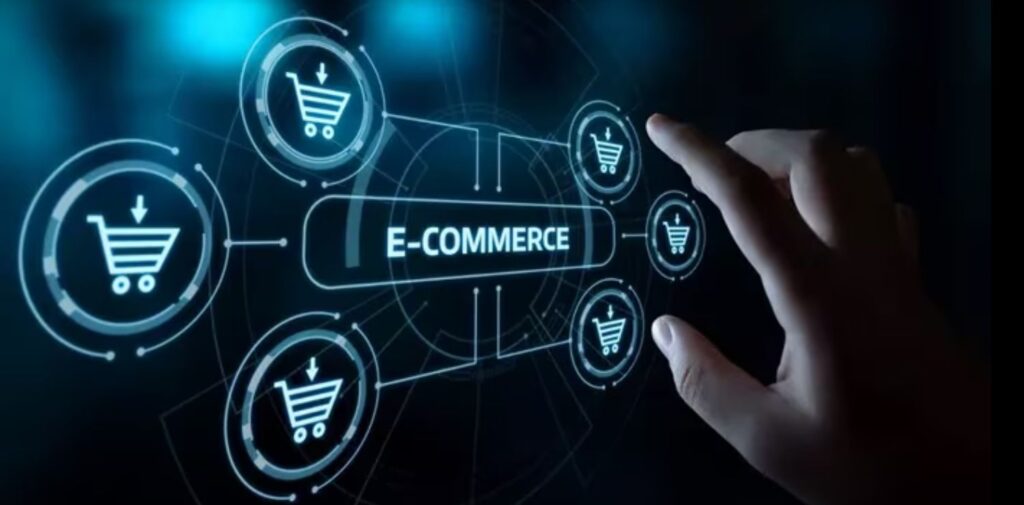
E-commerce became popular because it allowed people to shop from the comfort of their homes, avoiding the hassle of going to physical stores. Over time, these platforms expanded their range of products, offering everything from electronics to clothing, books, groceries, and even furniture. With options like home delivery, cash on delivery, and easy returns, E-Commerce transformed the shopping experience.
What is Quick Commerce?
While E-Commerce is great for people who can wait for their items, Quick Commerce (also called Q-Commerce) is designed for customers who want their products immediately. Quick Commerce promises delivery within 10 to 30 minutes of placing an order, making it ideal for urgent needs.
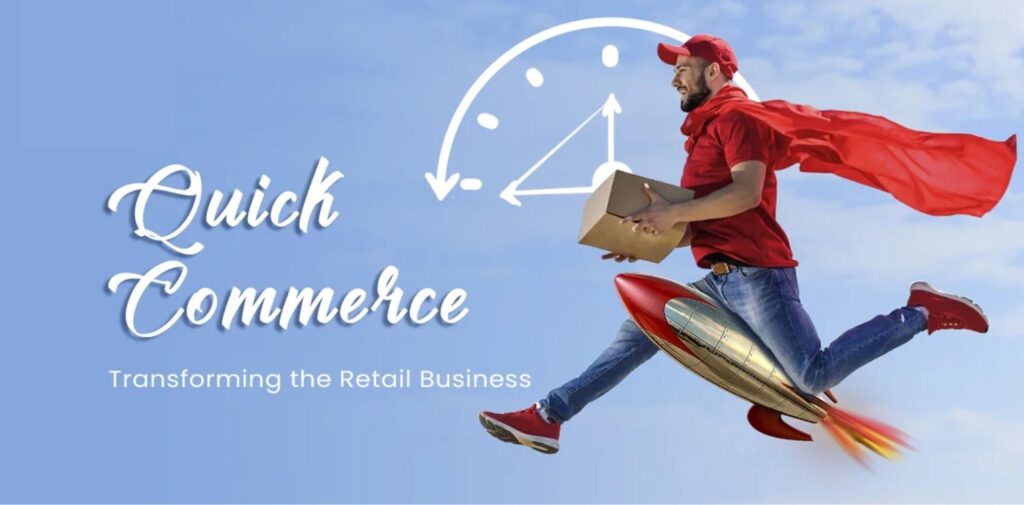
For instance, if you suddenly run out of milk or need a quick snack, Quick Commerce platforms like Blinkit, Zepto, and Dunzo allow you to order these items and have them delivered almost instantly. These services mainly focus on daily essentials like groceries, snacks, and beverages. Quick Commerce relies on micro-warehouses and a network of delivery partners located near the customer to ensure fast delivery.
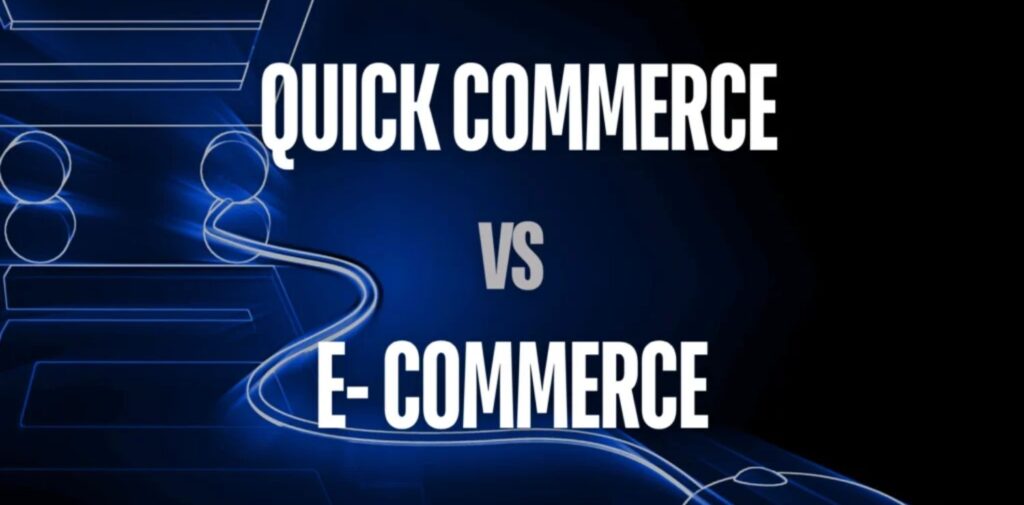
Key Differences Between Quick Commerce vs E-Commerce
Let’s dive deeper into the main differences between these two models:
- Delivery Speed:
- E-Commerce: Usually takes 2 to 7 days for delivery, although some offer same-day or next-day delivery options for an additional fee.
- Quick Commerce: Delivers within 10 to 30 minutes, focusing on super-fast service for urgent needs.
- Product Range:
- E-Commerce: Offers a huge variety of products, from fashion to electronics, books, furniture, and more.
- Quick Commerce: Mainly focuses on everyday essentials such as groceries, snacks, toiletries, and some personal care items.
- Customer Need:
- E-Commerce: Great for planned shopping where customers are okay with waiting for deliveries.
- Quick Commerce: Ideal for urgent, last-minute needs, offering immediate solutions.
- Order Size:
- E-Commerce: Often involves larger or bulkier orders, such as clothing, gadgets, or home appliances.
- Quick Commerce: Typically involves smaller, frequent purchases, such as groceries, milk, bread, or snacks.
- Geographical Reach:
- E-Commerce: Available across wider regions, including cities, towns, and even rural areas.
- Quick Commerce: Currently limited to urban areas, where the infrastructure supports faster delivery through local hubs or micro-warehouses.
Pros and Cons of E-Commerce
Pros:
- Wide Variety of Products: You can find almost anything you need on E-Commerce platforms, from gadgets to fashion, books, and more.
- Convenient Shopping: Shop from anywhere at any time with a wide range of options.
- Better Discounts: E-commerce platforms often offer sales, discounts, and cashback, making it easier to find deals.
- Order Tracking and Flexibility: Many E-Commerce platforms provide tracking details and give you the flexibility to reschedule deliveries.
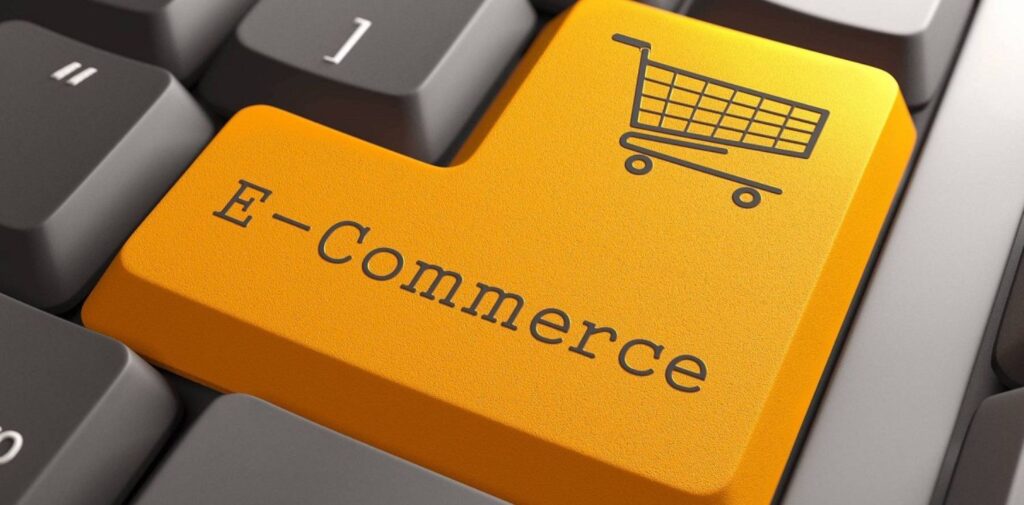
Cons:
- Longer Delivery Times: If you need something urgently, waiting for 2-7 days may not be ideal.
- Returns Can Be Hassle: Returning items can sometimes take time and involve a lengthy process.
- Shipping Fees: Some items, especially bulky ones, can have high shipping costs.
Pros and Cons of Quick Commerce
Pros:
- Instant Delivery: The biggest advantage is the super-fast delivery of everyday items.
- Great for Last-Minute Needs: Whether you forgot to buy groceries or need something urgently, Quick Commerce is perfect.
- Convenient for Essentials: It makes daily grocery shopping easier and more flexible.
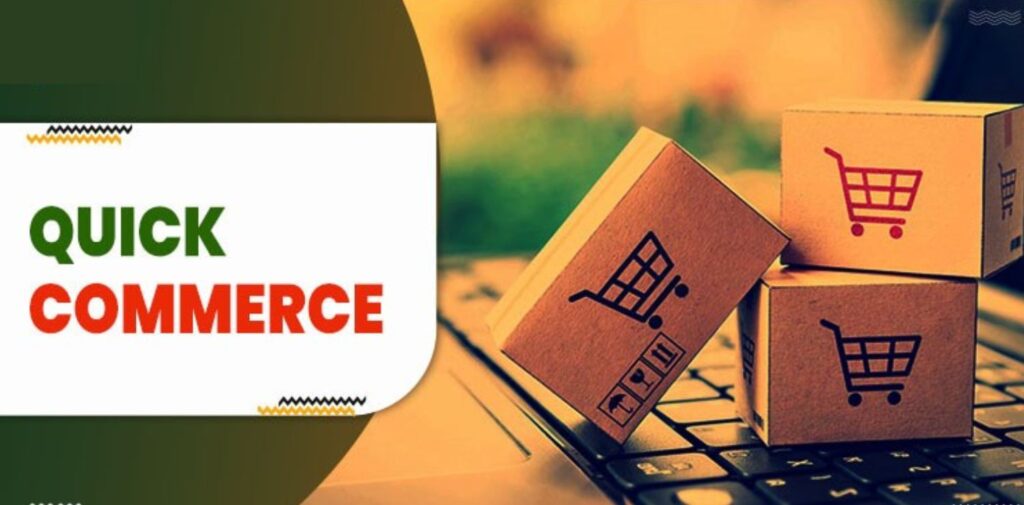
Cons:
- Limited Product Range: Unlike E-Commerce, the product range is smaller and focuses on essentials.
- Available Only in Cities: Quick Commerce is mainly restricted to urban areas, so it may not be accessible to everyone.
- Higher Prices: Due to the convenience and speed, some items may be priced higher than in traditional stores or even E-Commerce platforms.
The Future of Quick Commerce and E-Commerce
Both Quick Commerce and E-Commerce are here to stay but serve different purposes. With advancements in technology and logistics, these two models are becoming more efficient and widespread. For instance, E-Commerce companies are working on reducing delivery times to compete with Quick Commerce. Some companies like Amazon and Flipkart are already offering same-day or next-day delivery options.
On the other hand, Quick Commerce platforms are expanding their product offerings. Instead of just groceries, they are now delivering fashion items, gadgets, and personal care products, thereby creating a cross-over between Quick Commerce and E-Commerce. For example, Blinkit and Zepto are exploring fast delivery options for items beyond groceries, such as beauty products and lifestyle items.
Conclusion
Both Quick Commerce and E-Commerce provide great convenience, but they cater to different customer needs. E-Commerce is perfect for planned purchases and offers a wide variety of products. It’s an ideal solution for when you’re not in a rush. On the other hand, Quick Commerce is designed for urgent, last-minute needs, offering lightning-fast delivery of essential items.
As online shopping continues to evolve, we can expect both models to adapt and grow. Whether it’s for stocking up on household essentials or indulging in a spontaneous purchase, the choice between Quick Commerce and E-Commerce depends on what you need and how fast you need it.
The future is bright for both, and with time, we might see more innovation that brings together the best of both worlds!

